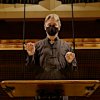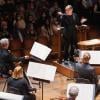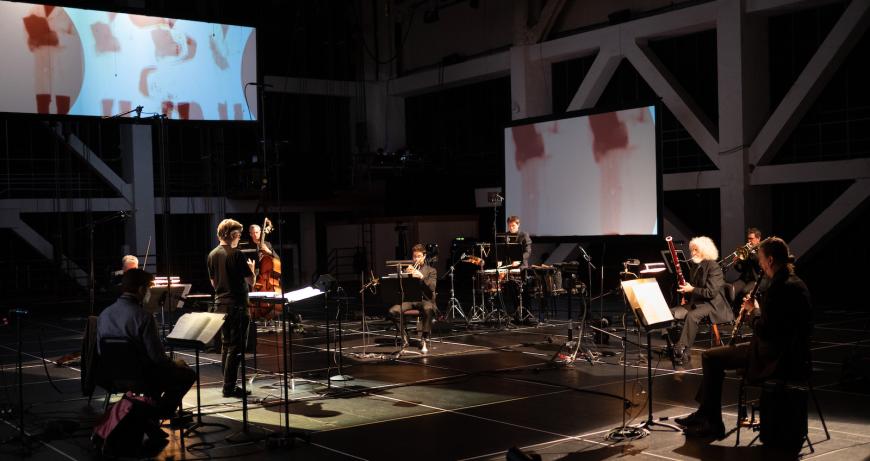
Beginning June 1, 2022, San Francisco Symphony is publishing a free online concert film of Igor Stravinsky’s The Soldier’s Tale on SFSymphony+, the orchestra’s free video-streaming service.
SFS Music Director Esa-Pekka Salonen, who leads the performance, says of Stravinsky, one of his favorite composers:
“His works have a very interesting place in history; they represent a complete change of paradigm. The way, in Soldier’s Tale, Stravinsky uses the septet is very theatrical, the musicians are as much part of the drama as the narrator and dancer.
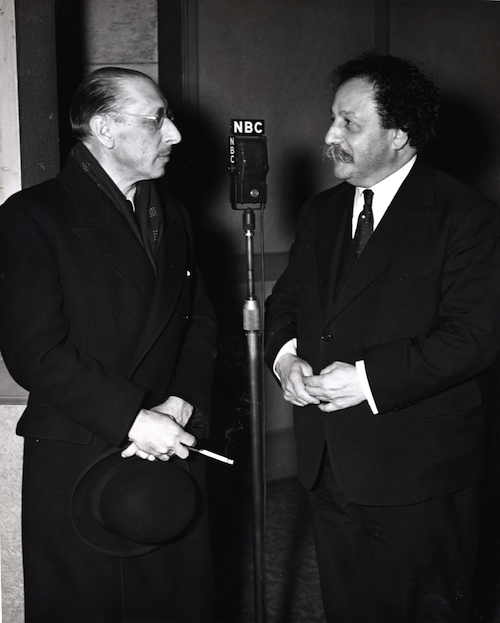
“The experience I hope the audience will carry with them after having seen this is that there are several layers, there are more than one or two layers in this, and the experience should go through all the layers of the psyche.”
Salonen follows Michael Tilson Thomas’s quarter century on the podium in Davies Hall, and MTT passionately advocated Stravinsky as well, including several festivals, such as the one in 2018, and he presented a Keeping Score special about the composer. Besides SFS, other organizations in the city have produced The Soldier’s Tale as well, including SF Performances.
But the connection with Stravinsky goes way back before recent times. SF Symphony Music Director Pierre Monteux (1936–1952), who conducted The Rite of Spring at the “scandalous” Paris premiere in 1913, also led the first SF Symphony performances of the original version here, in 1939.
Salonen has led Stravinsky series with the Chicago Symphony, the Philharmonia of London, and elsewhere. He has called the composer “Endlessly fascinating … he’s been compared with Picasso and there is a profound similarity, with their chameleon-like personality and endless rounds of metamorphosis.”
In his focus on Stravinsky with the SF Symphony, Salonen has recently conducted the Violin Concerto, The Rite of Spring, and other works; next up, June 10–12, he will lead staged performances of Oedipus Rex and The Symphony of Psalms.
Stravinsky had specified that L’Histoire du soldat is “to be read, played, and danced.” The work, with text by Swiss writer C. F. Ramuz, is based on a Russian folk tale by Alexander Afanasyev, called The Runaway Soldier and the Devil.
Despite the success of his ballets, by 1918 Stravinsky had suffered numerous personal losses (including the death of his brother) and was fighting financial problems. Creating a theater piece that could tour economically, using only a handful of performers, was born out of these financial realities. And then, even after finding backing from wealthy patrons, the original tour was canceled because of the 1918 Spanish flu pandemic.
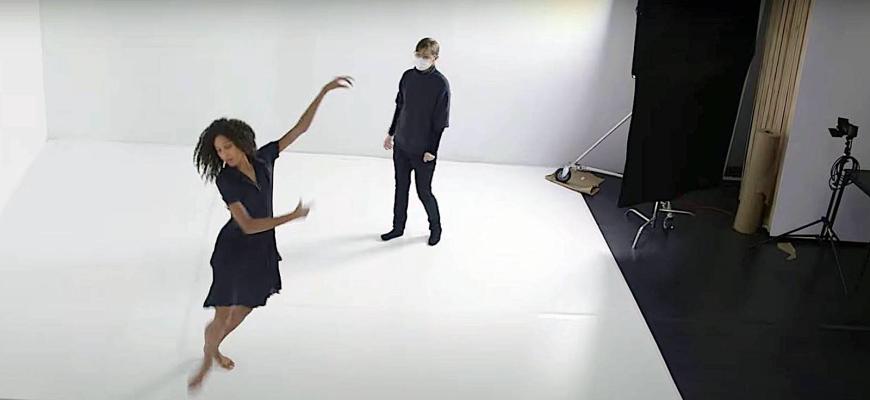
And yet, in spite of its birth pains, The Soldier’s Tale came to be regarded as one of the most important and influential theatrical chamber works of its time, inspiring other composers, from Kurt Weill (Threepenny Opera) to Martinu (Quartet and other works) to Wynton Marsalis (A Fiddler’s Tale), paving the way for chamber groups to present new music outside traditional settings.
Aaron Copland said that Stravinsky’s work had influenced three generations of American composers; a decade later, Copland revised the estimate to four generations.
The Faustian tale is of a young soldier who makes a deal with the Devil, trading his fiddle for a book that can tell the future. After he suffers the consequences of the bargain with the Devil, the second part of the drama becomes a fairy tale about a sleeping princess awakened by the soldier. He marries her, but his brief royal reign is interrupted by the Devil, who destroys the soldier in the end.
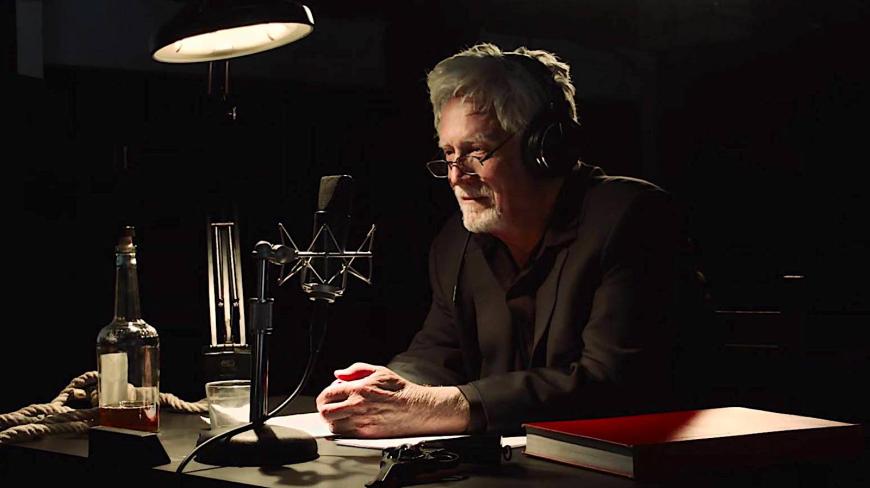
The narrator offers the moral of the story: “Why do we yearn to add what we once had to what we’ve got? Why do we turn from what we are to what we were, when we cannot? Why not account our joys twice blessed with each new day begun? Why, having some, seek to have it all, then find that we have none?”
Musically, the work is an early example of Stravinsky’s dizzying mixture of dissonance (still within a diatonic structure), jagged rhythms, extreme syncopation, jazz, tango, waltz, even ragtime.
The SF Symphony’s concert film was conceived by British director, designer, and video artist Netia Jones, who was inspired by the 1921 Russian abstract art exhibition “5x5=25.” The release is one of Salonen and the Symphony’s signature projects in the 2021–2022 season, aimed at expanding the possibilities of the orchestral experience through digital collaboration.
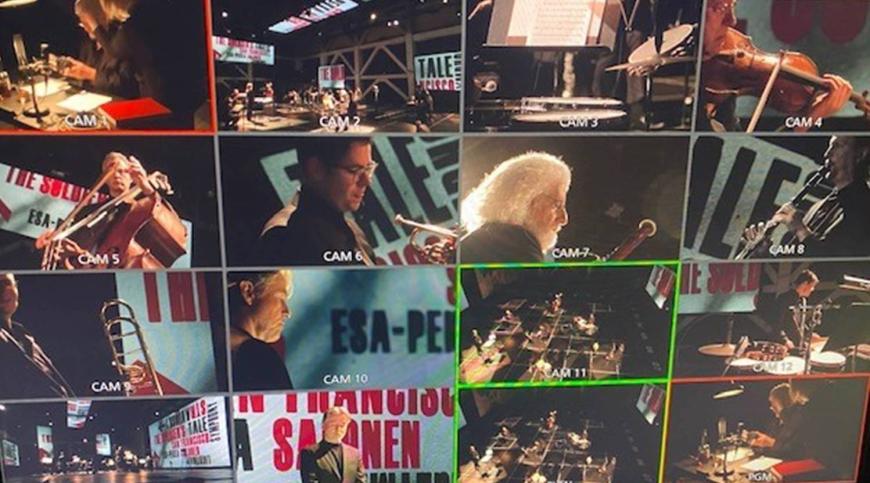
The Soldier’s Tale features actor Bruce Davison as the narrator (taking all roles); Alonzo King LINES Ballet dancer Adji Cissoko; and seven San Francisco Symphony musicians: concertmaster Alexander Barantschik, principal bass Scott Pingel, principal clarinet Carey Bell, principal bassoon Stephen Paulson, associate principal trumpet Aaron Schuman, principal trombone Timothy Higgins, and principal percussion Jacob Nissly.
Filmed in the SF Symphony’s SoundBox performance space and a studio in Richmond, California, the production is multidimensional, with large screens surrounding the musicians projecting dancer Adji Cissoko’s improvised choreography throughout the film.
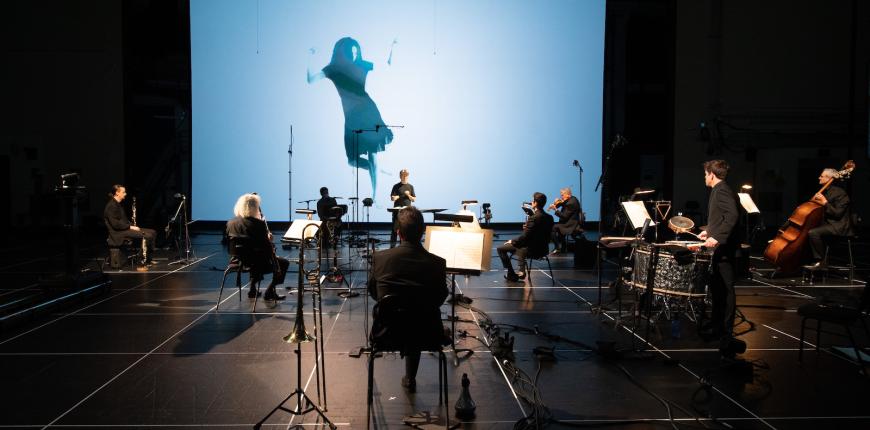
Oliver Theil, Head of Digital Innovation, has been given credit by MTT for the success of the award-winning Keeping Score series and numerous other digital projects. Of The Soldier’s Tale, Theil told SFCV:
“It was a delight to help produce the film, working with such a fantastic group of creatives in director Netia Jones, director of photography Steve Condiotti, and editor Taylor Joshua Rankin in making Esa-Pekka’s vision a reality.
“The idea for this production was very much born out of the pandemic. Esa-Pekka always wanted to do a proper studio production of The Soldier’s Tale and he began looking at works with smaller forces that could be filmed with the limitations created after the lockdown.
“With Salonen, the MTT-driven approach to stage performances [and] use of digital programs only intensified. During the pandemic-impacted years, Salonen managed to lead a wide variety of such programs as the SoundBox and Currents series, combining the music of Ligeti with artificial intelligence, PBS broadcasts of opening nights.”
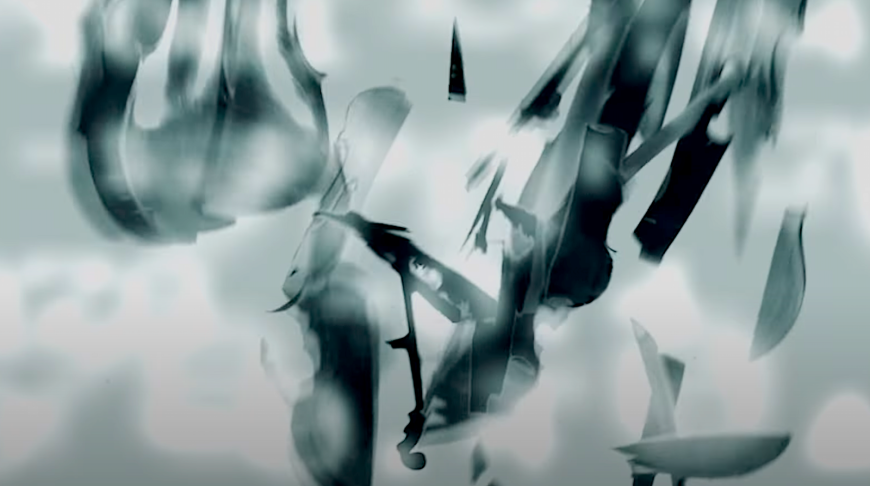
And yet, Theil says, The Soldier’s Tale is an entirely new challenge in musical storytelling for the internal video team:
There are so many different ways to approach a digital version of a piece like this and most of what you see online are just basic concert captures. For this The Soldier’s Tale, Esa-Pekka really wanted to explore a much more theatrical version, creating a much more specific and striking visual identity to match the many layers of theatricality within the piece itself. He made the perfect choice in bringing in the brilliant British director and designer Netia Jones to help create the film.
Netia has put together such a beautiful treatment, based very much in aesthetics of the early 20th century. She aimed for something that doesn’t feel entirely digital or high tech, but more simple and direct, cinematic but still highly stylized.
She joined us for the full month of March to build the show, design all elements of the sets, build the scripts, direct the captures, and work with us through the edit and extensive post-production. We first filmed for a week in a small studio across the Bay in Richmond with actor Bruce Davison and Lines Ballet dancer Adji Cissoko in a giant “white box” studio.
Here we captured many of the theatrical elements: the action, movement, props, and dancing, even the smashing of a violin into a thousand pieces, all against a white backdrop and white marley floor. This footage shot in various stylized ways served as the raw material for projection during filming, became graphic overlays, and also edited into the final film. It added a lot of the action and story that would drive the visual pace and I think worked tremendously well.
The following week, we moved the production into the Symphony’s SoundBox space with Esa-Pekka, Bruce Davison, and our septet of musicians for three days of filming with 14 robotic cameras. The SoundBox space was such a perfect soundstage for this production, as it can be treated and set up and manipulated in so many different ways. Those who have attended live SoundBox concerts there know the wonderfully immersive environment it can be for music making, let alone filmmaking.
The idea was to set it, visually, as a type of recording studio, with a seated narrator, so the audience’s experience is very much like listening to a story. But yet with a very distinct graphic and theatrical feel.
Veteran Hollywood actor Bruce Davison was brilliant, seated at a small table, narrating, amidst the septet of musicians, while the footage of his roles as soldier and devil were tightly scripted projected around them. In an unconventional approach, Netia decided to let Bruce play all roles, usually played by separate actors, creating an inner dialogue that is fascinating to watch as the story unfolds.
It’s wonderful to know that this brilliant piece will be available free of charge to all, with access on our streaming platform at www.sfsymphonyplus.org. It’s theater, it’s a concert, it’s a film, and it’s fantastic.”



